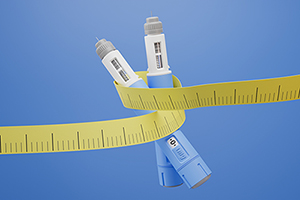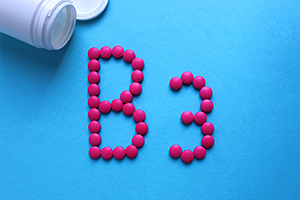



| By Dr. Ronald Hoffman
Last year, I recorded a podcast exploring the potentials and limitations of personalized genetic testing.
Recently, your intrepid science investigator (me!) submitted saliva and stool samples as kind of a science fair project; I test-drove some of the available personal testing services that are now proliferating.
First, some caveats. In a recent article in the Wall Street Journal entitled “Why Knowing Your Genetic Data Can Be a Tricky Proposition,” it was suggested that “as genome testing expands, people are dealing with the new information in positive and negative ways.”
A more comprehensive, formal study of the pros and cons of personal testing in otherwise-healthy individuals can be found in a research paper entitled “Personal Genome Sequencing in Ostensibly Healthy Individuals and the PeopleSeq Consortium.”
One of the study’s co-authors, Dr. Robert C. Green, a medical geneticist at Brigham and Women’s Hospital in Boston and Harvard Medical School, admits that genetic testing might be useful for studying the genetic defects that cause illness in individuals with a known specific medical disorder. Or as part of genetic counseling, the tests might also shed light on the risk of passing along diseases to offspring if there’s a family history of an inheritable condition.
But he cautions: “What is still controversial is to what extent sequencing or other genomic technology can help you with predicting disease, because there aren’t many clear-cut examples where there is any evidence that genomic information makes any difference in your life.” [emphasis added]
The study raises the concern that personalized genetic testing will simply amp up a person’s anxiety, like a new category of hypochondria. As Mark Twain once said: “I’ve been through some terrible things in my life . . . and some of them actually happened!”
Worse yet is the prospect that anxious parents will opt for routine genetic sequencing of their kids’ DNA at birth—with the uncertain prospect that this might provide guidance on how to fend off health problems, predict nutritional requirements, cultivate sports aptitude, or maximize academic achievement.
A concern, too, is that the vast majority of individuals who have undergone personalized genetic testing haven’t discussed their results with their doctors. Nor is it entirely clear that would have made a difference. The vast majority of physicians are unfamiliar with the implications of genetic testing, and would have had difficulty meaningfully interpreting the results.
That’s one of the reasons, other than personal curiosity about my own genetic assets and liabilities, that I undertook testing. As more and more people inevitably access these testing services, I’d like to be prepared to help my patients interpret their results.
I initially submitted saliva samples to Ancestry.com to discover my ethnic roots. This yielded the not entirely surprising conclusion that I am 100% Ashkenazi Jew. But Ancestry.com doesn’t delve into health-related parameters. If you approve, it’ll link you to individuals to whom you might be related, and it’ll help you construct a family tree. Your inbox may start filling up with messages like “Hi, I’m Olga, and my family was originally from the Ukraine. Is it possible we’re related?”
I then submitted a saliva sample to 23andMe to get more insight on health parameters. Recently, the personalized genetic testing service went “dark” because the FDA was concerned that they were giving out too many medically-related interpretations that were either unduly alarming, or imperfectly substantiated.
23andMe was just reinstated with FDA approval, probably with a somewhat toned-down, regulatory-compliant version of their report. I found it pretty milquetoast.
There’s ancestry information (I’m 99.8% European—I knew that!). More intriguing is that I’m part Neanderthal—more so than half of 23andMe subscribers. But it’s less than 4% of my DNA. (I’ve always thought my brow ridge was kind of prominent!)
There is a long list of exceedingly rare hereditary diseases—none of which I carry genes for. Whew!
23andMe then provides an estimate for the likelihood of a series of traits—eye color, skin color, hair characteristics, sleep quality, athletic aptitude, caffeine sensitivity, lactose tolerance, ability to taste bitter substances and to smell asparagus (some people can’t). Pretty innocuous stuff.
They mostly nailed it, except that they characterized me as a “sprinter” which I’m not—I’m slow and steady and have good endurance.
When it came to hair, they got it wrong big-time. The 23andMe results say it’s likely I’ll have significant hair loss by the age of 40. Epic fail! Fully 23 years past 40, I still have a shaggy mane.
This speaks to one of the limitations of genetic testing—it’s probabilistic. NO single gene mutation, or combination of genes, is always 100% expressed. Many traits are a summation of the influences of several genes, which exert a check-and-balance effect on one another.
Then there’s epigenetics—essentially the science of how environmental influences like nutrition, exercise, stress, and toxic chemical exposure can modify the expression of genes. For example, not everyone with a strong family history of Type 2 diabetes gets diabetes. At-risk individuals can harness epigenetics to circumvent their fates via healthy lifestyle modifications. They just might have to work a little harder than those without the “thrifty” genes that cause diabetes-prone individuals to accumulate extra belly fat and become insulin-resistant.
Frustrated by the limitations of Ancestry and 23andMe, I explored several “add-on” genetic analysis services. These provide more detailed interpretations of the genetic sequencing already performed by the first-tier testers.
Forget trying to read and decipher your raw data unless you have a Ph.D in genetics. To give you an idea, I wanted to open the zip file of my DNA codes downloaded from 23andMe. I was about to click on “print” when I noticed that the preview said it was 12,353 pages of small pica alphabet soup!
Instead, gene-crunching interpretation services allow you to upload the zipfiles you obtain from Ancestry or 23andMe. Like magic, they “digest” the thousands of lines of indecipherable gene codes and spit out interpretations for you.
In next week’s newsletter, I’ll tell you what I found out, I’ll rate the genetic analysis services like LiveWello , Promethease, and GeneticGenie; I’ll even share with you what I found out when I had my stool analyzed by Ubiome.
Though we think of declining estrogen as the hallmark of menopause, it's actually common for…

Up to 12 percent of Americans have ulcers at some point in life. Peptic ulcers…
Gallbladder disease is a modern illness. An estimated 20 million Americans have gallbladder disease. The…

New, more powerful weight loss drugs: Drugs like Wegovy, Rybelsus, Ozempic and Mounjaro/Zepbound are revolutionizing…

According to the Lancet, autoimmune disease affects one in ten people globally and it’s now…

This past week we were regaled with headlines like: High levels of niacin may increase…

Leyla Weighs In: The Erosion of Trust in Nutritional Research

Our virtual voicemail is open 24/7, so there's no need to wait to submit your questions for Dr. Hoffman. Leave a message, and you may hear your question featured on the Intelligent Medicine radio program!